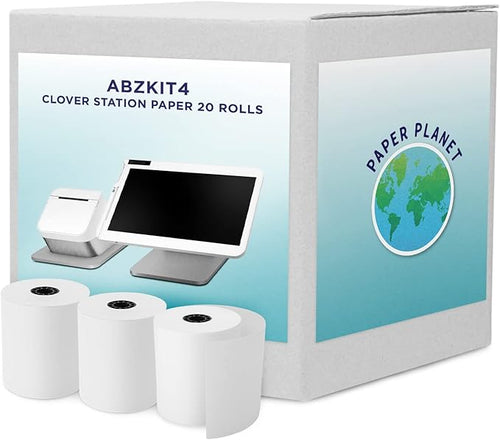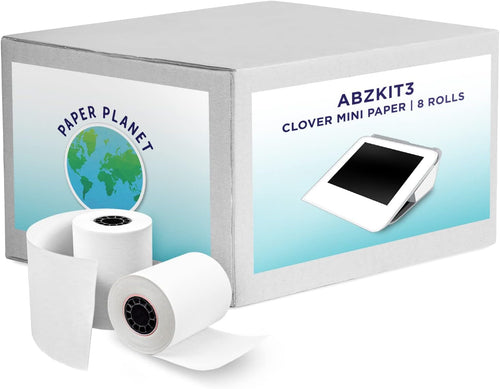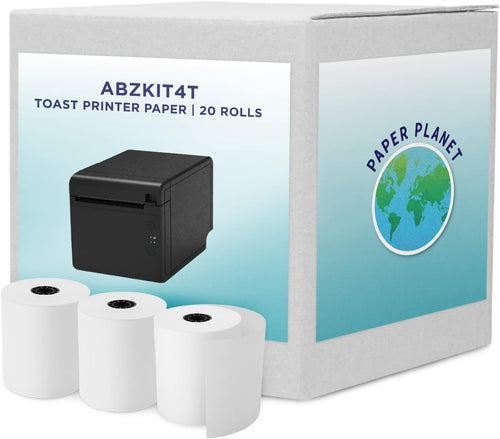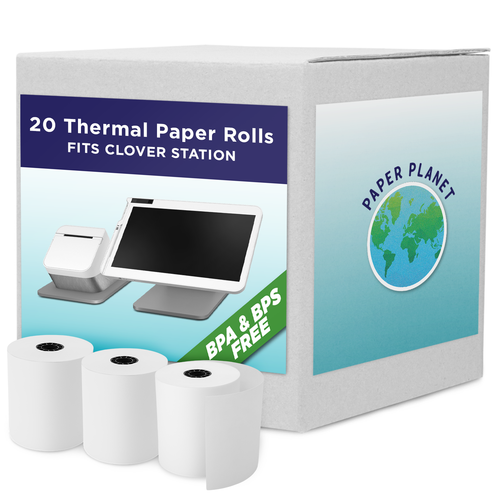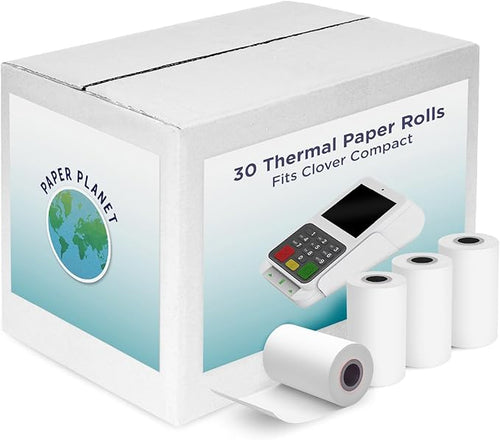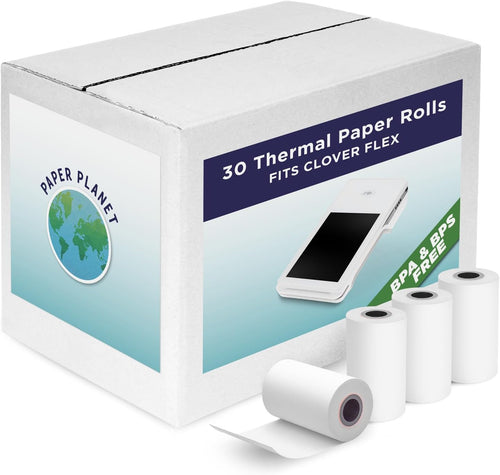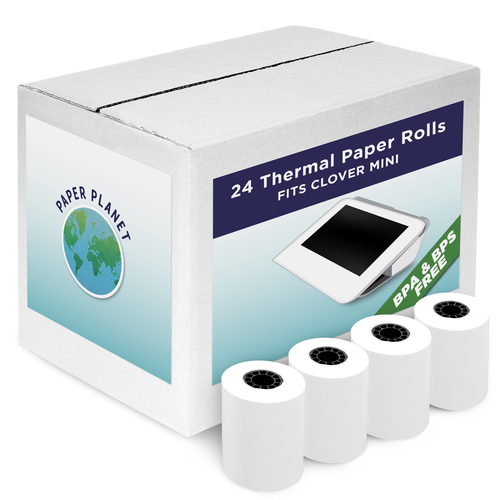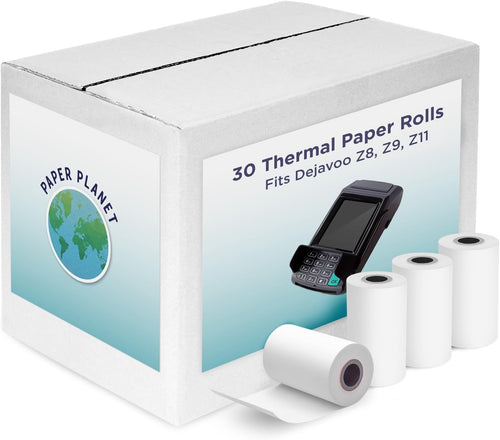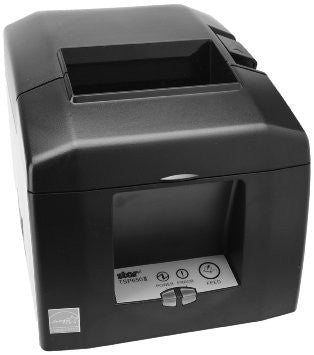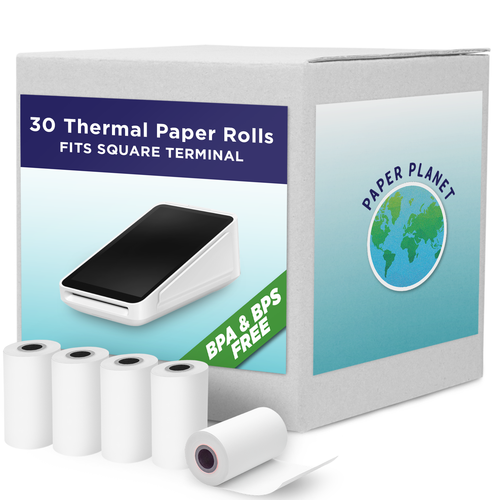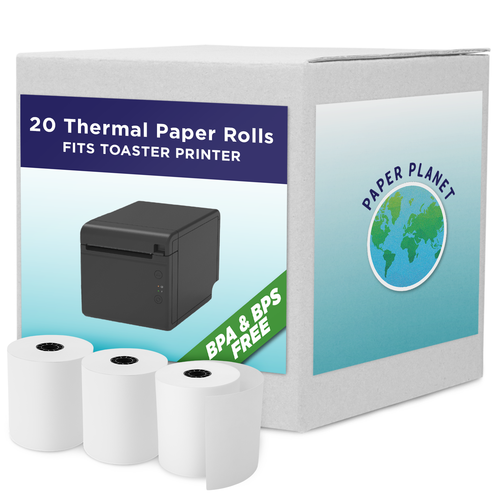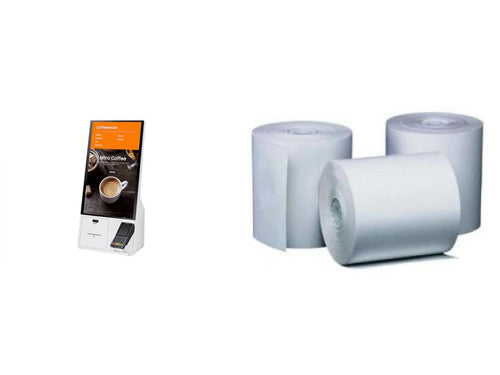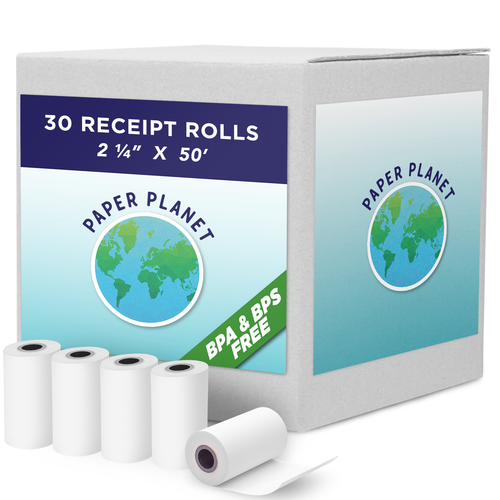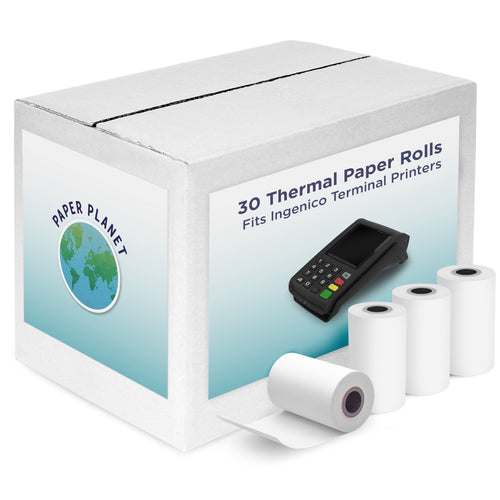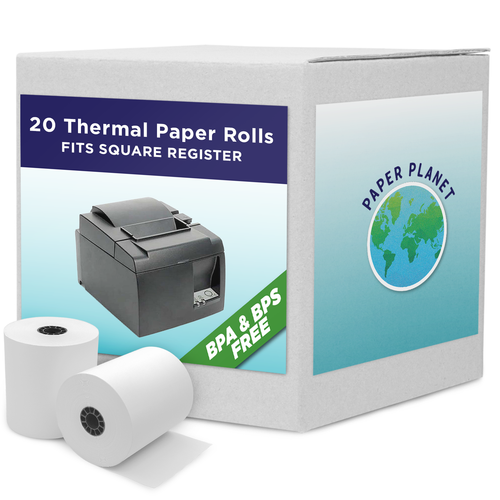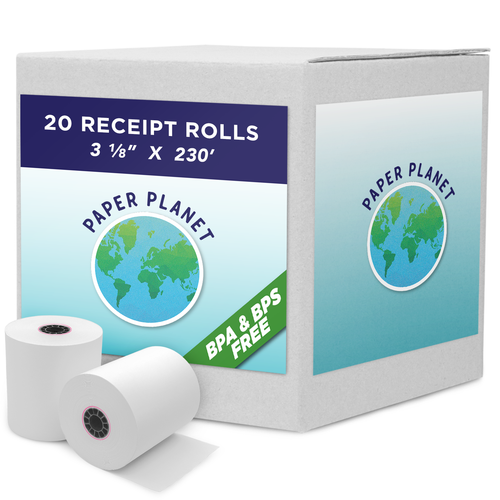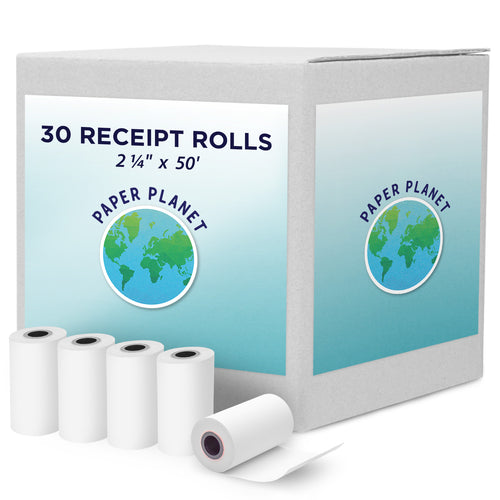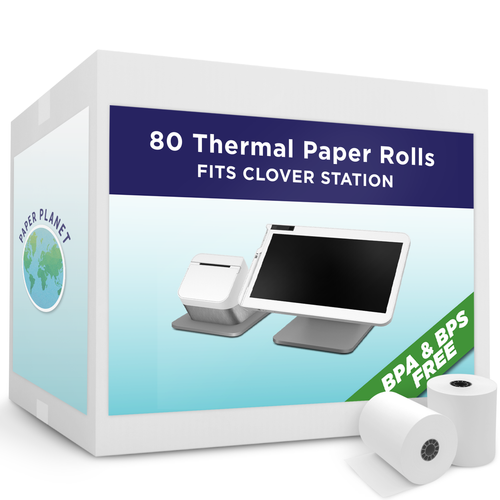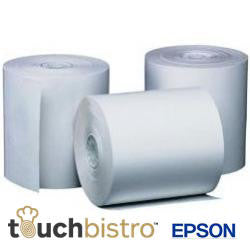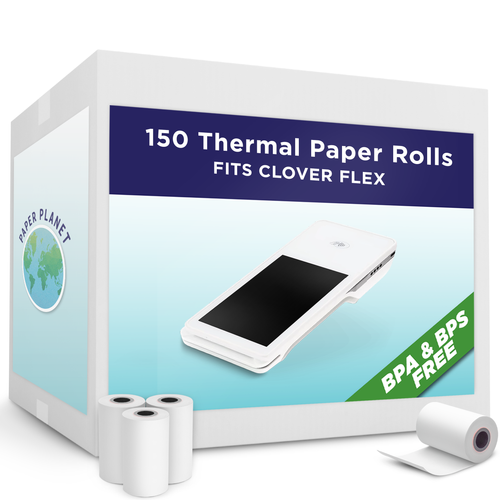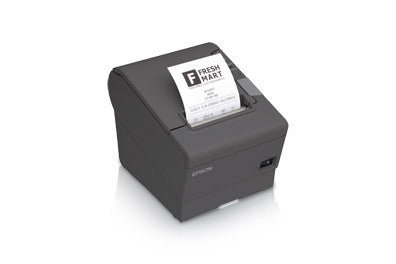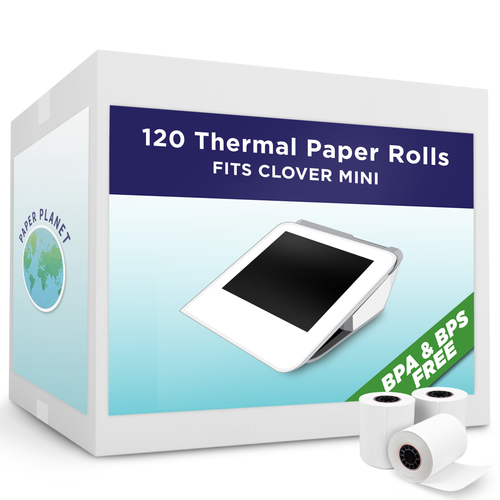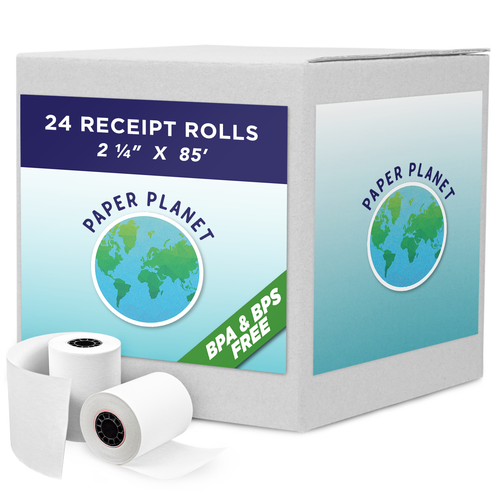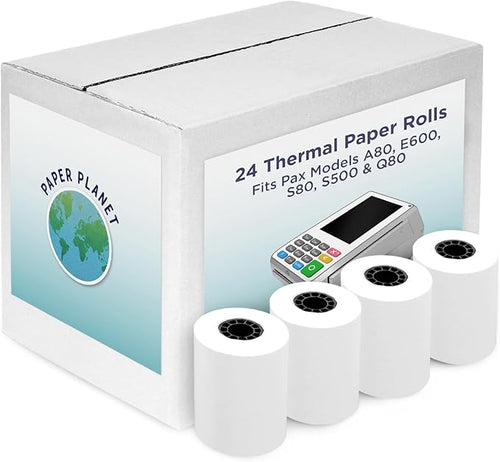High-Performance Thermal Paper for Reliable Printing
Browse Paper Planet’s collection of high-quality thermal paper rolls—built for speed, clarity, and performance. Whether you're printing receipts, labels, or tickets, our thermal paper delivers consistent, smudge-free results with every use.
We carry all the popular roll sizes used in point-of-sale systems, receipt printers, and credit card machines, making it easy to find exactly what your setup requires. From retail counters to medical offices, our thermal paper helps keep transactions and workflows running smoothly.
Need help finding the right thermal roll for your printer? Our support team is here to help.
Types of Thermal Paper
-
Standard Thermal Paper - This is the default option for most receipt printers. It’s white and heat-sensitive on one side and typically used in POS systems, kiosks, and banking machines. It balances cost, quality, and print speed well and is best for high-volume day-to-day operations.
-
Top-Coated Thermal Paper - Top-coated thermal paper includes a protective layer over the heat-sensitive surface. This coating helps resist moisture, heat, oil, and abrasion, making it more durable than standard paper. It’s commonly used for shipping labels, medical packaging, and receipts that may be exposed to handling, friction, or challenging environments.
-
Uncoated Thermal Paper - Uncoated thermal paper lacks a protective top layer, which makes it more affordable but less durable. It’s best suited for indoor use where documents like grocery receipts, kitchen tickets, and temporary labels are short-lived. It delivers sharp prints but fades faster under heat, light, or pressure.
-
BPA-Free and Phenol-Free Thermal Paper - This type of thermal paper is made without Bisphenol A (BPA) or other phenol-based chemicals, offering a safer option for businesses focused on health or regulatory compliance. It’s widely used in food service, healthcare, and child-related industries, providing clean, reliable printing without compromising safety.
-
Synthetic Thermal Paper - Made from plastic-based material instead of wood pulp, synthetic thermal paper is engineered to resist tearing, water, oil, and chemicals. It performs well in extreme temperatures and rugged conditions, making it ideal for shipping, cold chain logistics, industrial labeling, and lab environments where durability is critical.
-
Colored Thermal Paper - Colored thermal paper is available in pastel tones and bold hues for color-coding, branding, or visual impact. Despite the background color, the print remains sharp and readable. It’s commonly used for event tickets, promotional receipts, and tags that require visual distinction without sacrificing clarity.
-
Preprinted Thermal Paper - This paper already has logos, terms and conditions, security marks, or promotional elements printed on the surface. The thermal printer uses only the blank areas. It’s a strong choice for businesses that want consistency, save time on design, or reinforce branding across every transaction.
-
Self-Adhesive Thermal Paper - This label-style thermal paper has a sticky backing that adheres to various surfaces. It’s available in permanent or removable adhesive formats depending on the need. This type is used for barcode labels, package tags, inventory tracking, and specimen labels, for which fast printing and easy application are key.
Thermal Paper Roll Sizes
Thermal paper rolls are available in various sizes for different printers and applications. Choosing the correct size ensures smooth operation, prevents paper jams, and extends the life of your equipment.
-
Roll width: The most common widths are 57mm and 80mm. Smaller widths are typically used in portable or handheld devices, while wider rolls are standard for point-of-sale terminals and receipt printers.
-
Roll diameter: The outer diameter affects how much paper a roll holds. Larger rolls reduce the need for frequent replacements, which is helpful in high-volume settings. Always check your printer’s maximum supported diameter.
-
Core size: The core is the cardboard tube inside the roll. Standard core sizes are 12.7mm (1/2 inch) and 25.4mm (1 inch). The wrong core size can lead to improper loading or misalignment during printing.
-
Custom sizes: Custom roll dimensions are also available for specialty printers or branded applications. These can accommodate unique hardware or meet specific design requirements.
Where Thermal Paper Is Used
-
Retail and Point-of-Sale Systems - Thermal paper is widely used in cash registers, credit card terminals, and portable POS devices. Receipts printed on thermal rolls are quick, precise, and reliable—ideal for high-traffic retail environments where speed matters.
-
ATMs and Self-Service Kiosks - Automated machines in banks, airports, and service centers rely on thermal paper to print transaction records, balance slips, and confirmation receipts. The fast, jam-free printing supports smooth customer interactions without delays.
-
Parking and Transit Systems - Thermal paper is the go-to choice for printing time-stamped tickets and fare slips, from parking meters to bus ticket machines. It withstands light outdoor exposure and offers instant readability, helping streamline transport and enforcement operations.
-
Healthcare and Pharmaceutical Use - Thermal labels are used for patient wristbands, specimen tracking, prescription labeling, and medical equipment tags. BPA-free and phenol-free options ensure compliance with safety standards in sensitive environments like hospitals and labs.
-
Shipping, Logistics, and Inventory Management - Thermal paper powers barcode labels, address tags, and tracking stickers in warehouses and distribution centers. Synthetic thermal paper versions provide added durability for rough handling, moisture exposure, and extreme temperatures.
Using Thermal Paper Rolls the Right Way
-
Store in a stable environment: Keep thermal paper rolls away from heat sources and intense light. Prolonged exposure to high temperatures or sunlight can cause the coating to activate prematurely, ruining unused rolls before they’re even loaded.
-
Keep hands clean and dry: Handling thermal paper with oily or damp hands can interfere with the coating and cause uneven or spotty printing. Always handle rolls with care to avoid surface contamination.
-
Follow correct loading procedures: Every printer model has a specific way to load rolls. If the coated side faces the wrong direction, the printer won’t produce any output. Always double-check roll placement before printing.
-
Prevent surface damage: Avoid storing rolls that can rub against rough materials or sharp edges. Even minor surface scratches can affect print quality or cause the printer to misread the paper.
-
Limit exposure to chemicals: Certain chemicals, like alcohol or cleaning solvents, can break down the thermal layer. Keep thermal rolls away from cleaning supplies or industrial environments with strong fumes.
-
Avoid humid storage areas: Moisture can soften or warp thermal paper, leading to curling or poor feeding through the printer. Store rolls in sealed packaging in a dry space whenever possible.
-
Maintain printer components: If print quality drops, the issue might be a dirty or worn thermal head. Regular maintenance keeps output consistent and prevents damage to the paper.
-
Dispose with care: Used thermal rolls should be discarded according to local waste guidelines, especially if they contain chemical coatings. Check with your region’s recycling or disposal regulations for proper handling.
-
Rotate stock regularly: Thermal paper has a shelf life. To avoid waste or degraded performance, use older rolls first and keep track of inventory rotation in high-volume operations.
-
Avoid bending or creasing rolls: Pressing or folding thermal paper before use can damage the coating and cause inconsistent printing. Always handle rolls gently and store them upright when possible.
Why Choose Paper Planet for Thermal Paper?
-
Thermal paper is compatible with all major printers
Works seamlessly with Clover, Square, Toast, Epson, Star Micronics, and more.
-
BPA-free & eco-conscious options available
Safe for your team and better for the environment.
-
Bulk case pricing & fast shipping
Ideal for high-volume businesses that can’t afford to run out.
-
Smudge-free, high-contrast printing
Ensures every receipt, label, and ticket is easy to read.
-
Trusted by top industries
From retail and dining to clinics and courier services.
Frequently Asked Questions
What is thermal paper used for?
Thermal paper is a special fine paper coated with heat-sensitive chemicals. It’s used in direct thermal printers to print receipts, tickets, shipping labels, and other transaction records without the need for ink or toner.
What is the main advantage of using thermal paper rolls?
Thermal paper rolls offer crisp, smudge-free prints without requiring ink or toner, making them an efficient and budget-friendly option for businesses.
How do I know which thermal paper roll fits my printer?
Check your printer’s manual or model number. Common sizes include 2 1/4” x 85’ for credit card terminals and 3 1/8” x 230’ for standard POS systems. If you’re unsure, contact us for recommendations.
How can I contact customer support about my order?
You can contact PaperPlanet.com by email at [email protected] or by phone at 855-937-2737
Can I order thermal paper in custom sizes or with branding?
Yes, custom rolls are available. Please fill out our quote request form here.
How many rolls should I order at once?
We recommend ordering 2 months of supply at a time, so if your business uses 20 Rolls per month, we suggest ordering 40 rolls at a time.
Can the paper be tested before ordering in bulk?
Yes, you can order a smaller box through our website or contact us for a complimentary sample.
Do thermal paper rolls expire?
If stored correctly, Thermal paper can last for several years. Keep it in a temperate environment and out of the sun.
How quickly can I get thermal paper delivered?
We offer next-day delivery when available. You can see the estimated delivery time when you check out.
Is your thermal paper BPA-free?
Yes. We carry BPA-free and BPS-free thermal paper options to support safer, environmentally responsible printing. Look for BPA-free marked in the product descriptions.
Can thermal paper be used in inkjet or laser printers?
No. Thermal paper is made for direct thermal printers. It won’t work in inkjet or laser printers, which require different printing technologies.
Do you offer bulk discounts on thermal paper rolls?
Absolutely. Our cases are priced with volume savings in mind. The more you order, the more you save. This is perfect for high-traffic stores and multi-location businesses.
How does thermal paper work?
Thermal paper is coated with a special chemical that reacts to heat. When it passes through a thermal printer, the heated print head activates the coating, creating a sharp, black image without using ink or toner.
Does thermal paper expire?
Yes, thermal paper does expire, but its lifespan depends on storage conditions and the quality of the paper.
Can thermal paper be recycled?
Yes, BPA-free thermal paper is recyclable and recycled with mixed office paper. However, traditional thermal paper, which often contains BPA, is generally not recyclable due to the chemical coating that can contaminate the recycling process and potentially harm the environment.
What’s the difference between thermal paper and bond paper?
Thermal paper has a heat-sensitive coating that reacts with heat to create an image, while bond paper requires ink or ribbons for printing and has a smooth, often brighter surface.
What are the most common thermal paper roll sizes?
Some of the most common thermal paper roll sizes include:
-
-
2 1/4” x 50’ – for credit card terminals
-
3 1/8” x 230’ – for standard POS systems
-
4” x 6” – for thermal shipping labels
What industries use thermal paper the most?
Thermal paper is widely used across various industries, with retail, hospitality, healthcare, and transportation being prominent examples.
Why does thermal paper turn black when heated?
The black marks appear because the coating on thermal paper reacts chemically when exposed to heat, darkening in the areas touched by the printer’s heated elements.

